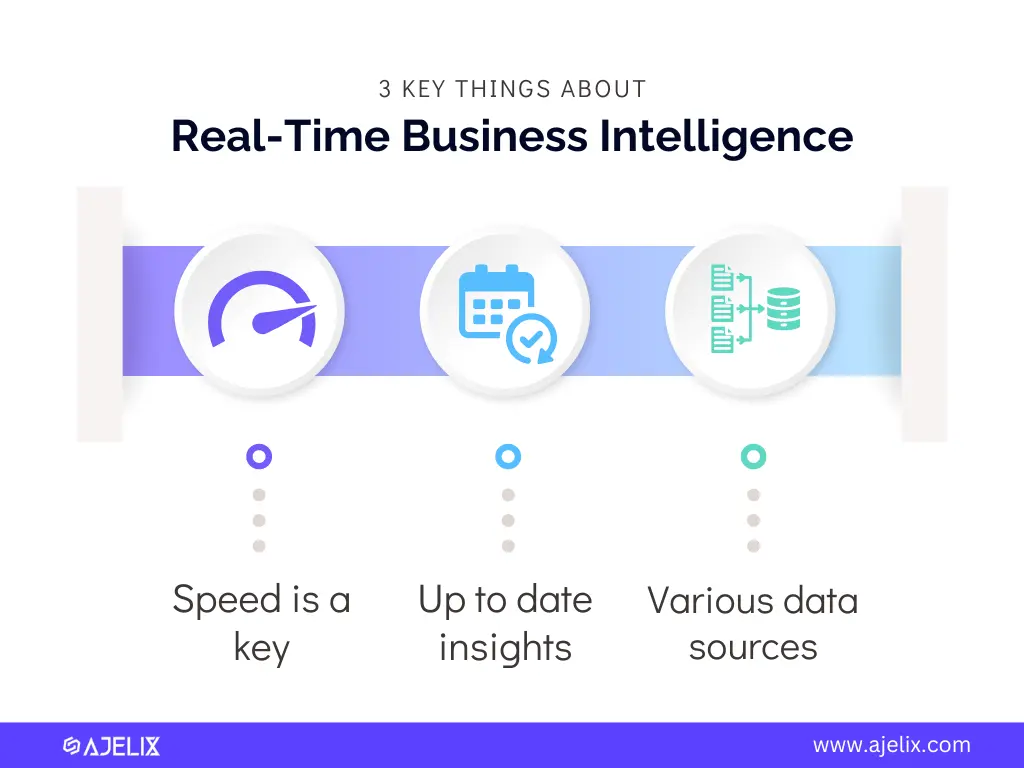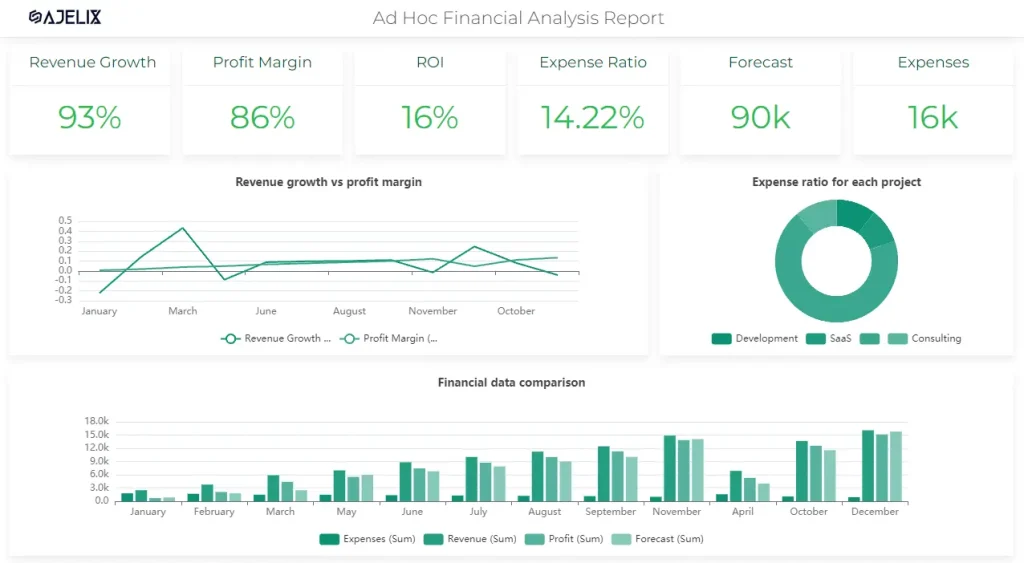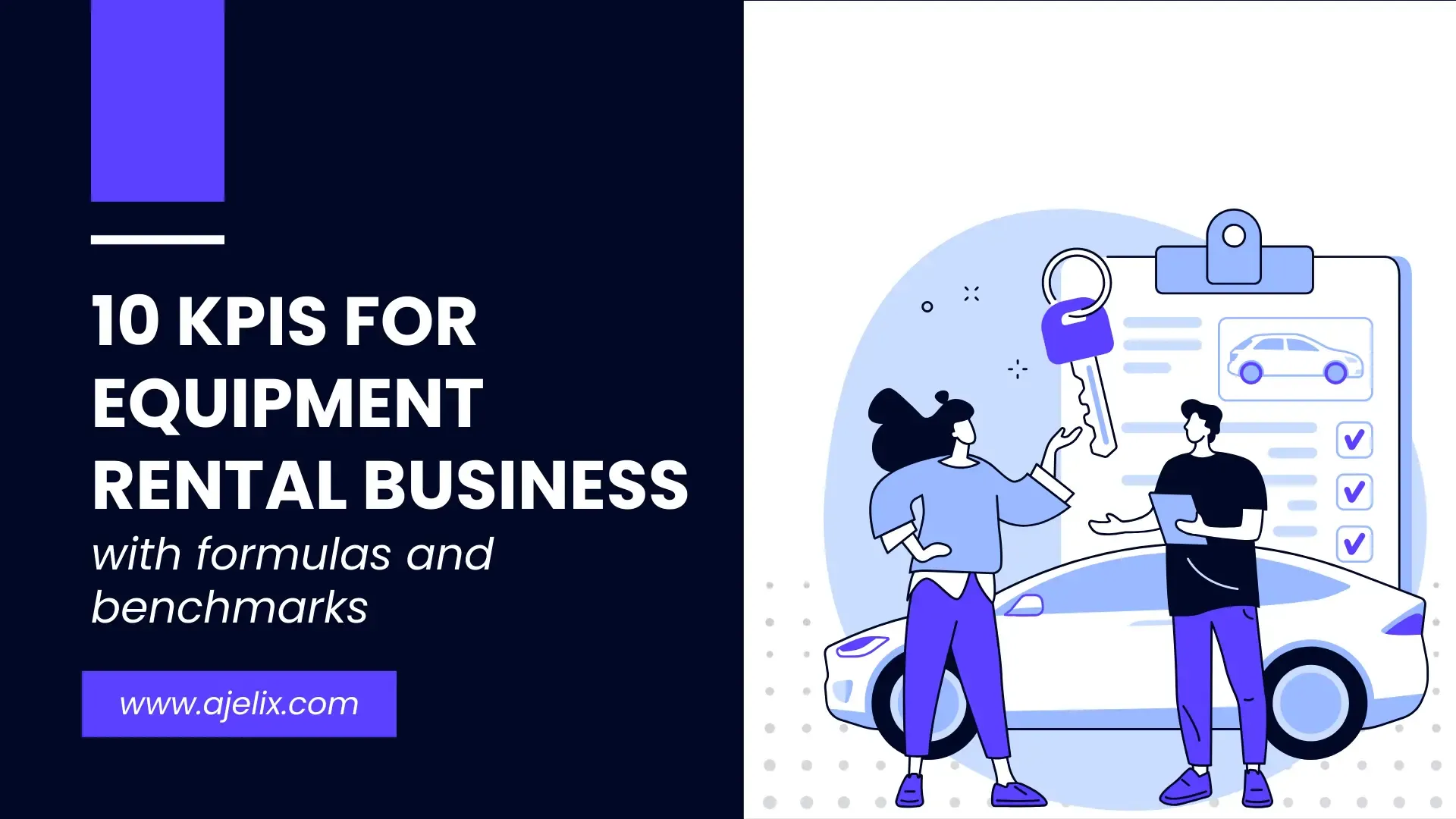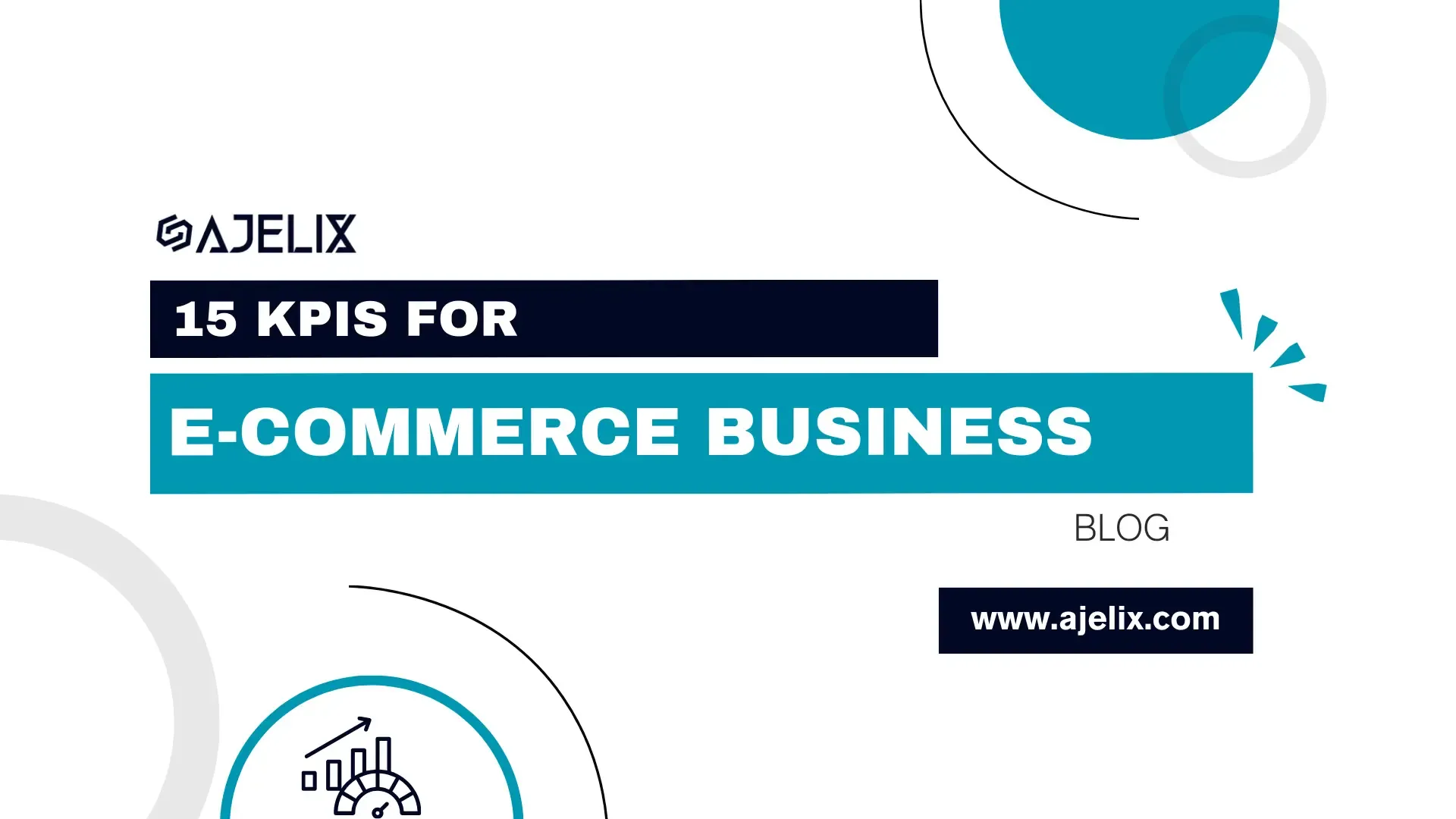- Home
- Data Visualization
- Tools
- Excel Formula Generator
- Excel Formula Explainer
- Google Apps Script Generator
- Excel VBA Script Explainer
- Excel VBA Script Generator
- Excel VBA Code Optimizer
- Excel VBA Code Debugger
- Google Sheets Formula Generator
- Google Apps Script Explainer
- Google Sheets Formula Explainer
- Google Apps Script Optimizer
- Google Apps Script Debugger
- Excel File Translator
- Excel Template Generator
- Excel Add-in
- Your Virtual AI Assistant For Excel Spreadsheets
- AI Answer Generator
- AI Math Solver
- AI Graph Generator
- Pricing
- Resources
RTBI offers a significant advantage in dynamic business landscape by helping swiftly respond to ever-changing conditions and make data-driven decisions. Real time business intelligence can help organizations respond to changes and notice any problems proactively.
In this article we will explore:
Before you jump in...
Looking to create reporting system fast & painlessly? Check our latest Ajelix BI platform for easy data analytics to help you make data driven decisions.
What is Real Time Business Intelligence?
Real-time business intelligence (RTBI) is using analytics and data processing tools to give businesses most recent and relevant data, visualized in a digital dashboard. This constant stream of information allows companies to make informed decisions in minutes, rather than waiting for reports or analyses.

Infographic with 3 key points about RTBI, image by author
Key focus points:
- Speed is key: RTBI focuses on having close to zero latency in data processing, meaning information is available almost instantly.
- Up-to-date insights: By analyzing data as it’s generated, RTBI provides the freshest insights into business operations.
- Data sources: Real-time data can come from various sources like operational systems, customer interactions, and sensor data.
How does RTBI work?
Real-time Business Intelligence (RTBI) goes beyond just acquiring data quickly; it’s workflow is designed for swift analysis and action.

Infographic with 6 steps how real-time business intelligence work, image by author
1. Data Acquisition
- Real-time sources: Data is collected directly from ongoing business processes, like sensor readings in manufacturing, customer interactions on a website, or social media sentiment.
- Streaming data: Unlike traditional BI that relies on static data dumps, RTBI utilizes streaming technologies to continuously receive information.
2. Data Processing and Transformation
- High-speed pipelines: Specialized tools and infrastructure can be used to handle the continuous flow of data efficiently.
- In-memory processing: Data is often stored in RAM for faster access and manipulation compared to traditional disk-based storage.
- Real-time analytics: Techniques like stream processing analyze the data as it arrives, identifying trends and anomalies.
3. Visualization and Dissemination
- Interactive dashboards: Data is presented in interactive dashboards that update constantly, allowing users to monitor key performance indicators (KPIs) and gain real-time insights.
- Alerts and notifications: Automated systems can trigger alerts and notifications based on pre-defined conditions, enabling immediate response to critical situations.
Here’s an analogy: Imagine a live sports ticker compared to a newspaper. Traditional BI is like the newspaper, offering a snapshot of information at a specific time. RTBI is the live ticker, constantly displaying the latest developments.
Additional points to consider:
- Latency reduction: RTBI aims to minimize three types of latency:
- Data latency: Time taken to acquire data from sources.
- Analysis latency: Time taken to process and analyze the data.
- Action latency: Time taken to react to the insights gained.
- Technology stack: RTBI often leverages technologies like cloud computing, big data frameworks, and streaming analytics engines.
Update Interval Of Real-Time BI
While the core concept of Real-Time Business Intelligence (RTBI) emphasizes near-instantaneous data access, it’s crucial to understand that achieving a true “zero latency” scenario is challenging.
Typical update intervals in RTBI
- Sub-second updates: This applies to specific scenarios like high-frequency trading or monitoring critical infrastructure, where minimal delays are crucial. Data replication technologies can achieve this near real-time feat.
- Seconds to minutes: This range is common for many RTBI applications. For instance, customer website activity, social media sentiment analysis, or production line sensor data might be processed and visualized in real-time with updates every few seconds or minutes.
- Short intervals (1-4 hours): This applies to scenarios where capturing the “pulse” of a business process is essential. For example, inventory management systems might update every hour, providing a clear picture of stock levels throughout the day.
Factors Affecting Update Intervals
- Data source: Sensor data or website activity updates much faster than financial transactions or social media sentiment, which might be analyzed in batches.
- Data processing complexity: Simpler calculations can be performed in real-time, while complex analyses involving massive datasets might take longer.
- Alerting requirements: Critical situations might necessitate immediate notifications (sub-seconds), while less urgent insights can be delivered at fixed intervals.
Therefore, RTBI doesn’t guarantee absolute real-time data; instead, it focuses on significantly reducing latency compared to traditional BI methods. Striking a balance between speed and data accuracy is crucial. Overly prioritizing speed might lead to unreliable information due to incomplete data processing.
In essence, RTBI strives to achieve the fastest possible update interval that delivers reliable and actionable insights for the specific business use case.
Benefits of Real Time Business Intelligence
Real-time Business Intelligence offers significant advantages over traditional BI methods, empowering businesses to make data-driven decisions faster and adapt to dynamic market conditions. Here are some key benefits:

5 Key benefits for Real Time Business Intelligence, infographic by author
- Improved Decision-Making: Make swift and informed choices. Identify and address issues promptly, capitalize on fleeting opportunities, and optimize processes based on the latest data.
- Enhanced Operational Efficiency: Monitor critical performance indicators (KPIs) across various departments. Identify bottlenecks proactively, streamline operations, and optimize resource allocation.
- Proactive Problem-Solving: Detect anomalies and potential issues before they escalate into significant problems. Measure and minimize downtime or financial losses with RTBI.
- Stronger Customer Experience: Personalize customer interactions based on real-time data and behavior. Increase customer satisfaction, loyalty, and improved conversion rates.
- Competitive Advantage: React quickly to market shifts and customer demands. RTBI provides businesses with a significant edge to adapt their strategies and offerings based on real-time insights.
Overall, RTBI equips businesses with the tools to:
- Respond to situations in real-time
- Make data-driven decisions with greater confidence
- Gain a competitive edge in the marketplace
However, it’s important to remember that implementing RTBI requires careful planning and investment in technology and infrastructure.
RTBI Use Cases In Different Industries
Retail
Use Case: A clothing store experiences a sudden surge in demand for a specific type of jacket due to a celebrity wearing it.
| Traditional BI | RTBI |
|---|---|
| Sales data would reflect this surge only after a period (daily/weekly reports). | Real-time sales data from the point-of-sale system instantly reveals the surge. |
Actions:
- Replenish stock: The retailer can quickly identify the need to reorder the jackets before they sell out.
- Adjust pricing: Based on the high demand, the store can consider a slight price increase to maximize profits.
- Targeted marketing: Social media promotions can highlight the popular jacket, further capitalizing on the trend.
Benefits:
- Reduced stockouts: RTBI prevents lost sales due to empty shelves.
- Optimized pricing: Real-time adjustments based on demand fluctuations.
- Data-driven marketing: Capitalize on trends and customer behavior insights.
Additionally, RTBI can be used for:
- Personalized recommendations: Suggesting relevant items to customers based on their browsing behavior.
- Real-time inventory tracking: Preventing overstocking and stockouts across stores.
- Dynamic staffing: Scheduling staff efficiently based on real-time customer traffic data.
With RTBI retailers can be proactive and make data-driven decisions that improve customer experience, optimize operations, and maximize profitability.
Finance

Financial report analysis dashboard example from Ajelix BI
Use Case: A small financial advisory firm managing client investment portfolios.
| Traditional Way | RTBI |
|---|---|
| Traditionally, advisors rely on historical data and periodic reports to make investment decisions. This might lead to missed opportunities or delayed reactions to sudden market shifts. | Monitor stock prices, industry trends, and economic indicators in real-time. Track the performance of client portfolios, and identify potential risks or underperforming assets. |
Benefits:
- Based on real-time market movements, advisors can adjust investment strategies to capitalize on opportunities or mitigate potential losses.
- Communicate proactively with clients regarding significant market changes that might impact their portfolios.
RTBI Advantage: With real-time data, the advisor can:
- Analyze the situation: Assess the extent of the market correction and the specific stock’s performance.
- Contact clients: Proactively communicate the situation and discuss potential options, such as selling or holding the stock.
While large financial institutions might have extensive RTBI setups, cloud-based solutions are becoming increasingly accessible for smaller businesses. These solutions offer real-time data analysis capabilities at a more manageable cost, allowing even small financial advisors to benefit from the advantages of RTBI.
Manufacturing
Use Case: A production line experiences a malfunction in a critical machine.
| Traditional Approach | RTBI |
|---|---|
| Identifying the issue might take time, leading to production delays and potential product defects. | Sensors on the machine continuously transmit data on performance metrics (temperature, vibration). Anomalies in sensor data trigger immediate alerts, notifying operators of the potential malfunction. |
Benefits:
- RTBI enables proactive maintenance by identifying potential equipment issues before they escalate into major breakdowns.
- Early detection of malfunctions minimizes production stoppages and ensures efficient operations.
This example highlights how RTBI goes beyond just monitoring production lines. It facilitates real-time analysis of sensor data, enabling manufacturers to:
- Improve product quality: Ensure products meet quality specifications and identify defects early in the production process.
- Optimize inventory management: Get insights into production status and demand for just-in-time inventory management, reducing storage costs and waste.
We covered an article about data analytics for manufactures and KPIs for operational managers.
Transportation & Logistics
Use Case: A delivery truck encounters unexpected traffic congestion on its route.
| Traditional Approach | RTBI |
|---|---|
| The driver relies on traffic updates or navigation apps, potentially leading to delays and missed delivery schedules. | The system analyzes real-time traffic conditions and suggests alternative routes to avoid congestion. The driver receives immediate notifications about delays and updated estimated delivery times. |
Benefits:
- Improved delivery efficiency: Real-time route adjustments minimize delays and ensure timely deliveries.
- Enhanced customer service: Accurate ETAs keep customers informed and manage their expectations effectively.
This example showcases how RTBI goes beyond just tracking shipments. It facilitates real-time analysis of various data sources, enabling T&L companies to:
- Optimize fleet management: Track driver performance, fuel efficiency, and vehicle maintenance needs in real-time.
- Proactive problem-solving: Identify potential issues like delays or equipment malfunctions and take corrective actions promptly.
Real-Life Example: FedEx utilizes RTBI to:
- Track shipments in real-time: Customers can see the exact location of their packages and receive estimated delivery times.
- Optimize delivery routes: Drivers receive real-time traffic updates and suggested routes to ensure efficient deliveries.
By implementing RTBI effectively, T&L companies gain a significant advantage in a competitive landscape:
- Reduced transportation costs
- Improved customer satisfaction
- Enhanced operational efficiency
6 Real Time Business Intelligence Software
- Ajelix BI: Simple BI platform for non-technical teams who appreciate user-friendly experience and ease of use.
- Microsoft Power BI: A comprehensive suite with real-time data streaming capabilities. Offers a user-friendly interface for data visualization and analysis.
- Sisense: Geared towards providing real-time analytics for businesses. Allows for the creation of interactive dashboards and reports.
- Qlik Sense: Known for its in-memory analytics engine, enabling real-time data exploration and visualization.
- Zoho Analytics: A cloud-based platform with real-time analytics capabilities. Offers a variety of data visualization tools and dashboards.
- Tableau: A popular choice for data visualization, also offers real-time data exploration features.
Conclusion
While implementation requires careful planning and investment, RTBI holds immense potential for businesses of all sizes, particularly with the increasing accessibility of cloud-based solutions.
As we look ahead, RTBI is poised to become an even more crucial tool. Businesses that leverage its capabilities will gain a significant competitive edge in the ever-evolving global market.
FAQ
Traditional BI relies on historical data and periodic reports, limiting the ability to respond swiftly to changing situations. RTBI offers continuous analysis, providing businesses with a real-time view of their operations and market dynamics.
RTBI stands for Real-time Business Intelligence. It’s an approach that involves analyzing data continuously as it’s generated, enabling businesses to gain immediate insights and make data-driven decisions in real-time.
Some of the most popular BI tools are Ajelix BI, Tableau, Power BI, Zoho Analytics, Qlik Sense, and Sisense.
Ready to create real time dashboard with Ajelix BI?
From data to report in one minute or less with Ajelix BI

Similar posts

10 Equipment Rental KPIs For Rental Business

20 Financial KPIs For The Finance Department




